Throwback to Nov 2019: Hundreds of Dead Rats, Birds & Other Animals Washed Up on Westport Beach, New Zealand
According to NZ Authorities, it was just a 'coincidence' that an aerial 1080 poison operation had happened a few days before: the rats must have leapt to their death!
I’ve written before about the poison 1080 and its aerial use in New Zealand as a pesticide. For instance, the use of behavioural science techniques and propaganda of the type weaponised against citizens during the covid era. And the People’s Inquiry 2020 project, that has collated some personal stories of the harmful impact of these kinds of poisons on everyday Kiwis.

Now we have a new lens to see the world through, I’m revisiting previous research. This one is a particularly horrific incident. Here I’m summarising an investigation my colleagues and I did back in 2019: one of many hundreds of concerning incidents that inevitably arise when tonnes of class 1a toxic poison - with no antidote - is dropped from from helicopters onto land, forests, waterways and water catchments. This has happened, and continues to happen, repeatedly, year after year, for SEVENTY YEARS.
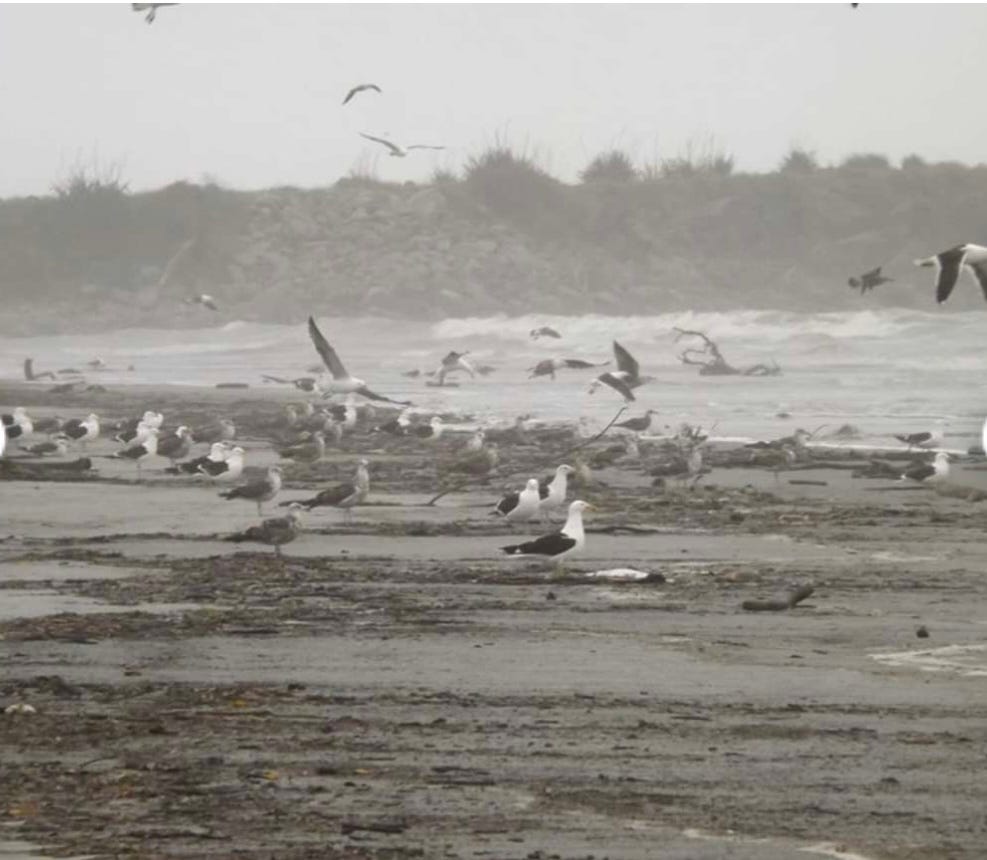
Quick Synopsis
In Nov 2019, there was another aerial 1080 poisoned-food bait operation in the area of Maruia, South Island. In the following days there was torrential rain that flooded the nearby Buller River.
In a scene from a horror movie, morning dog-walkers discovered hundreds of carcasses of rats, birds and sea creatures on the beach, 140 kms downstream from Maruia. NZ Dept of Conservation (DOC) had conducted the poisoning operation and predictably, DOC lab tests claimed “nothing to see here” i.e. there was no 1080 in the dead wildlife. In fact, in a ludicrous attempt to dismiss ‘conspiracy theorists’ DOC staff claimed the poisoned rats had committed suicide, by jumping into the River in despair.
In reality, independent tests confirmed the carcasses were indeed toxic and posed a risk to the environment, including public health.


This event was crucial because it clarified one of the ways the NZ Gov propaganda had evaded close scrutiny about the ‘safe and effective’ 1080 poison for 70 years: DOC instruct (and pay) Landcare Laboratories to only test for 1080 contamination - NOT it’s metabolites like citrate, nor the special pigment that identifies the poison - and it uses a methodology that is 37 years old.
In this post, I return to the ‘scene of a crime’ from 2019. I summarise what happened and ponder what is buried ‘just under the surface’ of the sand on an isolated wind-swept Westport Beach…
What Happened at Westport?
Maruia perhaps isn’t the beautiful natural paradise that some may believe. From 1st to 3rd November 2019, 104 tonnes of 1080-poisoned cereal food-baits were dropped by helicopter hoppers into the Maruia River catchment, South Island. This catchment, as you can see in the map above, feeds into the Buller River, which flows into the sea at Westport's North Beach.
This wasn’t the first, nor the last time that this kind of tonnage of 1080 poison baits were dropped on this area. We calculated this particular operations’ poison contained (at 0.15%) 156,000,000 mgs of 1080 poison (sodium monofluoroacetate) which was enough pure poison to potentially kill 2.23 million x 70 kg people - and harm many, many more.
Over the next few days there was heavy rainfall in the area, which as had happened before, caused flooding of the Buller River. The West Coast of New Zealand typically has high levels of rainfall.
On November 9th 2019 several hundred carcasses (about 680) of different species, including sea-life, were found on the beach at Westport, approx. 140 kms downstream from the border of the poison operational area. Because of the risk of secondary (or tertiary) poisoning, volunteers concerned for the health and safety of residents and tourists in an around Westport Beach, collected the carcasses. Later a DOC staff member hired a digger and a make-shift grave was dug on the edge of North Beach above the tideline:
Samples of the dead animals were also collected by volunteers (not DOC staff) and subsequently frozen before immediate transfer to an independent laboratory. It was clear from these tests that 1080 was indeed the cause of the horrendous amount of death and the volunteers were absolutely right to try to mitigate the risk of secondary poisoning, by disposing of the carcasses. Toxicology results from that lab’s tests are summarised here:
There was a delay, but several days later, samples of a selection of some dead species were sent by DOC staff to Manaaki Whenua – the Government-approved (and funded) Landcare laboratory for testing for 1080, i.e. Sodium fluoroacetate only - communications about and results of those tests are publicly available here.
Re-Cap: What is 1080?
Sodium Monofluoroacetate (Compound 1080) is a highly toxic, inhumane, synthetic metabolic poison. It has no antidote. Legally its use is restricted to authorised personnel only. It is unlicensed in many countries because of risks to public and food safety. The sublethal effects of the poison on humans are unknown (other than some deductions from animal models, accidental poisonings and suicide attempts). 1080 is a proven endocrine disruptor and impacts upon the body’s major organs. It is manufactured in the USA by Tull Chemicals and transported to New Zealand’s two Government-owned poison bait factories, where it is stored in a watery solution before being mixed with cereal or other substances perceived to be attractive to ‘pest’ species (e.g. rats and possums). The manufacturers’ Material Safety Data Sheet [MSDS] points out that 1080 is highly toxic to all life and poisoned carcasses remain toxic and therefore must be immediately incinerated or buried appropriately in a hazardous waste facility.
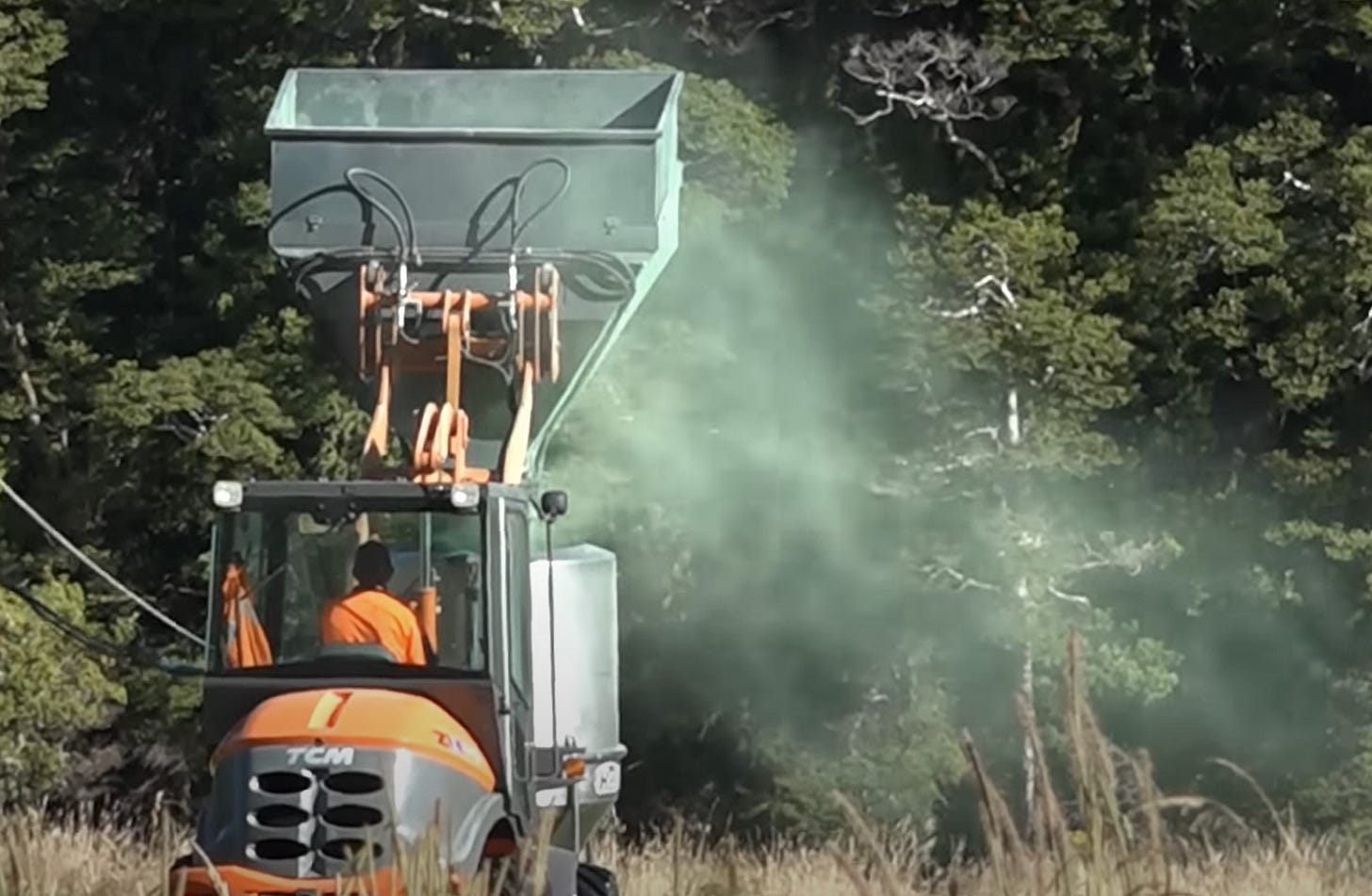
These mandatory precautions when dealing with toxic carcasses are rarely, if ever, undertaken by those contracted to conduct the aerial poison operations. Despite poisonings continuing for 70 years, to date, there has been no independent studies of the claimed safety or ‘effectiveness’ of this policy and no epidemiological research has been conducted.
The independent laboratory (pdf posted above) showed the presence of three chemical markers of 1080 poison pellets in intestinal contents, namely:
· Fluoroacetate – because these samples were collected in the early morning, i.e. prior to any rise in ambient temperature and immediately after unknown time period in cold water.
· Fluorocitrate - this indicates the conversion to fluorocitrate from fluoroacetate which can be within a few hours; but if the poisoned species were in cold water during travel down the Buller River, this process would have been slowed, hence the presence of both acetate and citrate in the samples.
· Green dye - this can only mean these animals ingested 1080 poison pellets (or the contents of a 1080-poisoned carcass), there is no other possible source. It is a legal requirement that this green dye be added in the manufacture of poisons like 1080 pellets.
Results from Manaaki Whenua - Landcare Research Laboratory showed that only fluoroacetate was tested for, and that those results were below the minimum detectable levels. “Safe as a cuppa tea” as some pro-poison ‘experts’ have described it.
At that time, DOC weren’t quick enough off the mark to get the Bernay’s strategy in motion
“Tell a Lie, Tell a BIG Lie, Tell it FIRST, Tell it repeatedly”
So desperate were DOC staff to quell the rumours on social media about the likely cause of the mass poisoning event, that some staff claimed the rats had apparently jumped into the River and drowned. I kid you not!
Imagine if we’d had a Kiwi Bob Moran to make a cartoon out of this!
Some scientific and other ponderings
Fluoroacetate is metabolised in the presence of aerobic life. Fluorocitrate is the agent that causes the interference in the Krebs’s cycle and interferes with other enzyme systems in living organisms leading to death. The risks from secondary poisoning means that some of the victims would likely have consumed carrion that had already metabolised fluoroacetate into fluorocitrate.
There is a significant difference in timing of the collection of samples. During this time these carcasses were exposed to warmer ambient temperatures and incoming tides whilst on the beach before collection. Therefore the conversion of acetate to citrate and other fluoridated compounds would accelerate; a negative result for acetate would be an expected outcome in this case.
The 1080 poison operation was designed to kill rats - why then were DOC not willing to confirm that the rats had indeed been poisoned and their policy was a ‘success’? Is it the secondary poisoning risk that is censored because it is dangerous to the narrative that ‘1080 saves birds’?
By failing to request testing for fluorocitrate or for any other fluoridated compounds in these samples, DOC/Environmenta Protection Agency (EPA) and the Ministry of Health (MoH) are misleading, with intent, the public of NZ, the Government and buyers of NZ export produce as to the safety of the environment, water sources and food.
All aerial applications of 1080 are sanctioned by the Medical Officer of Health MOoH) on instruction of the Director General of Health (DG), this meant that the hundreds of toxic carcasses left on the public beach with no further investigations as to the cause of death, had the implicit approval of the MOoH and DG.
In a silent admission of guilt, DOC later posted a small ambiguous Warning Notice about the dangers at the site, meaning the public, their dogs and other scavengers were in potentially at risk of danger of contamination by an unknown disease entity for several days, if not weeks.
Why doesn’t a test for fluorocitrate exist in NZ, other than via an independent laboratory, when NZ is the most prolific user of this poison? And why have EPA/DOC or Manaaki Whenua - Landcare Research apparently not developed a test - or MPI as the main agent of monitoring of residues in domestic and exported food?
In line with the Precautionary Principle, any potentially toxic waste in a public area should have been sent to a specialist toxic waste facility. It was an illegal action and a dereliction of fiduciary obligations and duty of care by our government.
Legacy media at the time appeared confused about the complexities and involved and oof course reiterated the propaganda that anyone with any curiosity about 1080 poison are ‘conspiracy theorists’ or ‘tin-foil-hat-wearing nutters’.

Meanwhile, nearly five years on, what has happened to the pile of toxic carcasses buried on Westport Beach? We have the GPS coordinates - homes were only a few hundred metres away. Maybe in the future the site will be dug-up and retested so we can fill the gaps in our knowledge about how long 1080 poison stays in the bones and environment?
Academic stuff:
Bowman, R. G. (1999). Fate of Sodium Monofluoroacetate (1080) following disposal of pest bait to a landfill. New Zealand Journal of Ecology, 23(2), 193–197.
Eason, C., Ross, J., & Miller, A. (2013). Secondary poisoning risks from 1080-poisoned carcasses and risk of trophic transfer—A review. 2013, 40(3), 217–225.
Eisler, R. (1995). Sodium Monofluoroacetate (1080) Hazards to Fish, Wildlife and Invertebrates: A Synoptic Review (Contaminant Hazard Reviews 30; Patuxent Environmental Science Center U.S. National Biological Service, p. 52). USA EPA.

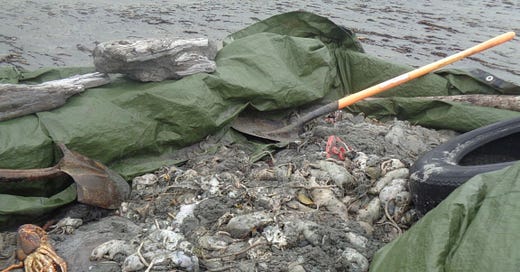


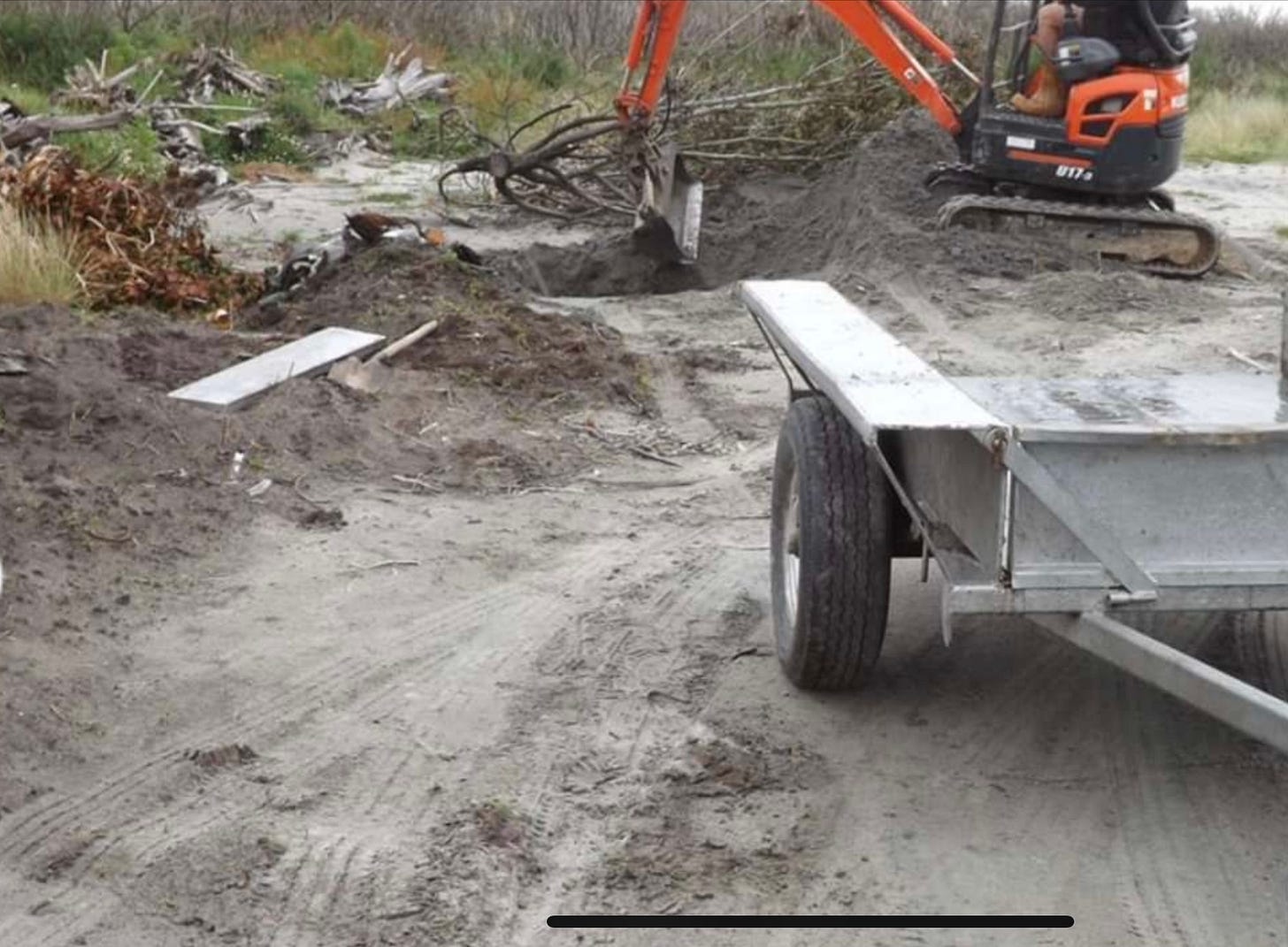
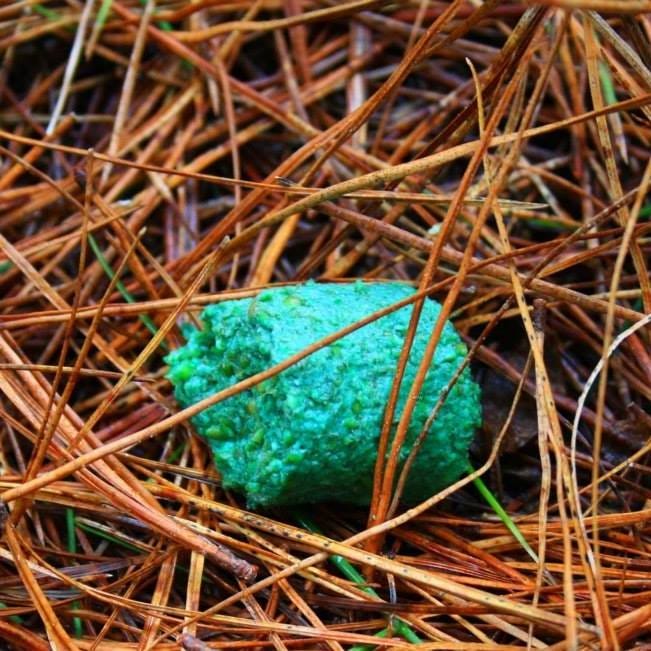
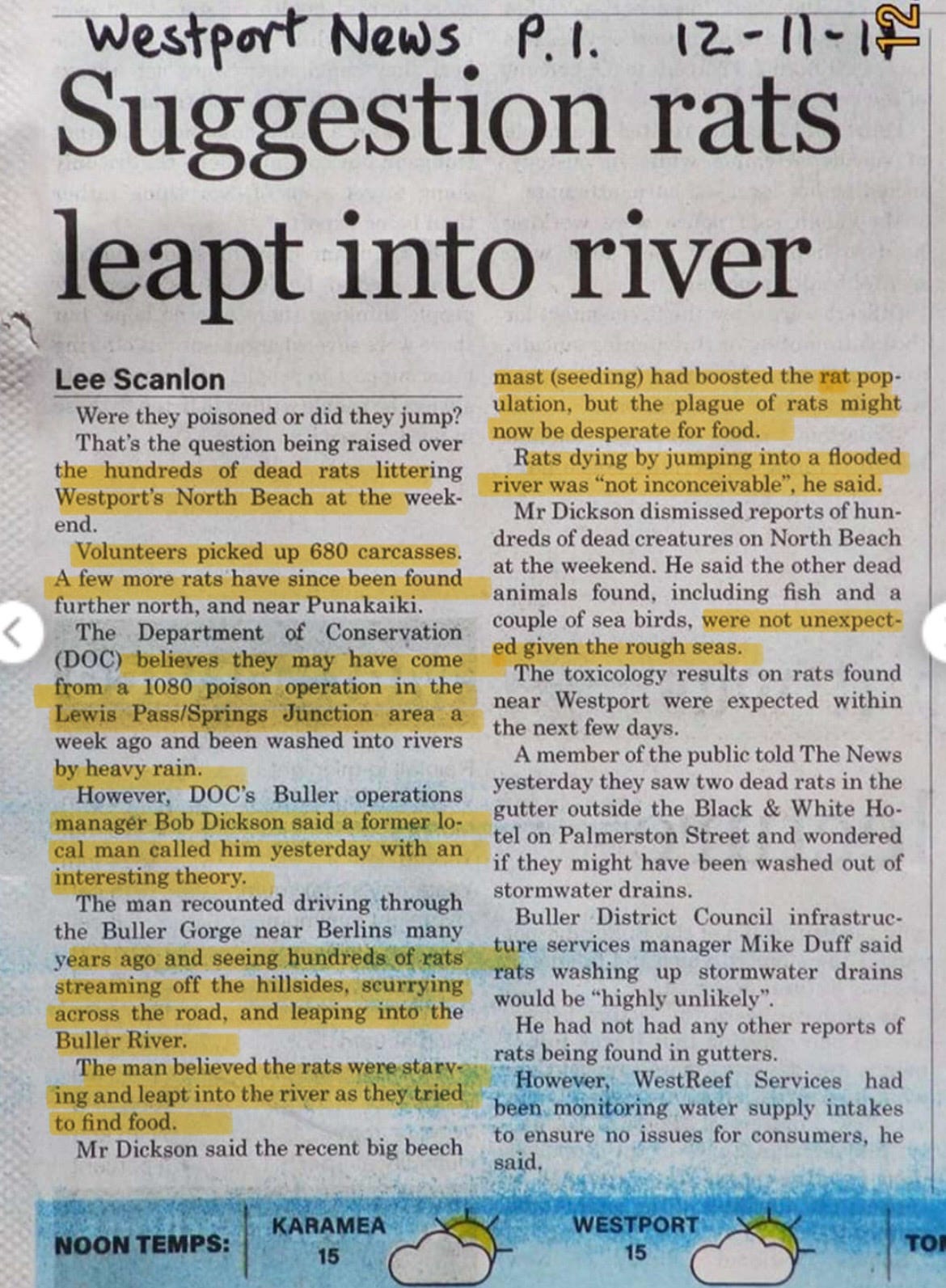
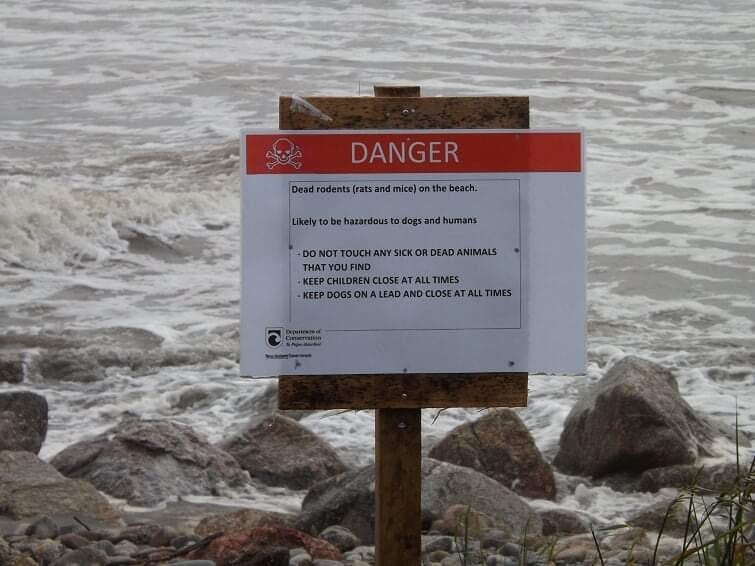
that 2018 story is interesting because on the back of the last 5 years I was starting to wonder if this 1080 shit was experimentation to find out how to poison larger mammals.
Partner just hunted the Begley valley recently just before 1080 drop which is just about due to happen! Pre feed done I think, all in the name of TB in cattle which were moved from the Rainbow area to the flats of the farm. And funny isn't it that cattle movement seems to spread TB, not possums. My cousin used to do testing and said cattle movement is to blame.. what happened on the coast was shocking and will be with us for many years due to how they covered it up in the beach, all very hush hush! Thanks Ursula, cheers Vicki